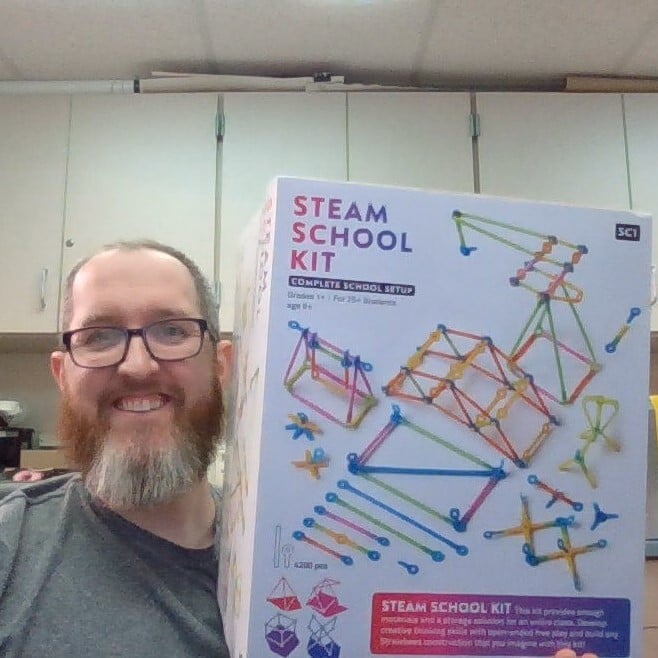Why STEM in Elementary School Matters
STEM education—Science, Technology, Engineering, and Mathematics—lays the foundation for critical thinking, problem-solving, and creativity.
Integrating STEM in elementary schools helps students develop essential skills early, preparing them for future academic and career success. Research from the Community for Advancing Discovery Research in Education shows that early exposure to STEM enhances cognitive development, fosters collaboration, and increases engagement in learning.
By making STEM accessible and hands-on, educators can inspire young learners and build confidence in these essential fields.
Three Reasons to Implement STEM Education in Elementary Schools
There are many reasons to implement STEM Education in elementary schools but we've highlighted three primary reasons below including boosting engagement with hands-on learning, fostering critical thinking and problem solving, as well as sparking future interest in subjects that pave the way for innovation.
Reasons to Implement STEM in Elementary
Hands-On Learning Boosts Engagement
What we know:
- Elementary students learn best through interactive, hands-on experiences. Strawbees encourages exploration and experimentation,
- STEM learning through tools like Strawbees can make abstract concepts tangible. We know that STEM education has a large effect on the academic success of students.
- With Strawbees, students can build structures, test designs and engage in engineering challenges that reinforce scientific principles in an engaging and playful way.
Critical Thinking & Problem Solving Skills
What we know:
- STEM fosters analytical thinking and resilience by encouraging students to test ideas, learn from mistakes, and iterate solutions.
- Early exposure to STEM education helps children develop skills in creativity, teamwork and perseverance, which are essential for academic success.
- Early engagement builds confidence, especially for underrepresented groups in STEM fields where the gap can be large according to The American Society of Mechanical Engineers.
Early Exposure Sparks Future Interest
What we know:
- Introducing STEM concepts in elementary school increases the likelihood of students pursuing STEM careers according to Girls Excelling in Math and Science.
- Studies have shown that early exposure to STEM initiatives positively impacts elementary students' perceptions and dispositions towards these subjects.
- Strawbees provides an inclusive and accessible way for students to explore engineering, coding, and problem-solving in a fun, low-barrier environment.
STEM in Elementary with Strawbees
Educators and districts across elementary schools are integrating Strawbees into STEM education, to increase student engagement and introducing coding. Through hands-on activities, students are able to explore engineering principles in a meaningful way, leading to a greater interest in STEM subjects.

.png?width=300&height=89&name=logo_LAUSD_OfficialWordmarkSealcombo_CMYK-01%20(1).png)


UTICA Community Schools
Christopher Brown, a Media Center Teacher at UTICA Community Schools in Michigan, USA with the help of an Instructional Technology Coach implemented Strawbees across 25 elementary schools, using not just Strawbees STEAM Classroom Kits but also micro:bit technology to teach engineering and robotics.

What Educators Say
Here’s what educators are saying about their experiences:
"I could not believe how quickly 4th-6th graders went from just learning about Strawbees and struggling a bit at first to try and find their groove, to building this huge pyramid out of 64 smaller pyramids."

Christopher Brown
Media Center Teacher at UTICA Community Schools
"It was amazing to see the students get excited when they saw that it was actually working."

Connie Ann Roussel
Literacy & Innovation, Randolph Elementary School
"I thought it was going to be hard (with 6-7 year olds) so that showed me I have to be careful with the assumptions I make about kids. (Strawbees is) one product that offers more surprises than a lot of other things!"

Sharee Pfaff
M.S. Maker Ed. Facilitator, Mariners Christian School, US
Catapult Physics
Strawbees Classroom includes a variety of lessons for different grade levels, but one that can be particularly useful for implementing at an elementary level is Catapult Physics. Built with our STEAM Classroom kit this lesson is suitable for grades 3rd-8th.

Elementary STEM Grants
Finding funding for STEM and STEAM education can be challenging, but there are a range of grants and funding sources to support hands-on learning initiatives for elementary schools.
NSF Funding Search – The National Science Foundation offers a search function to find K-12 funding.
Grants.gov – One can use the Grants.gov website to search for STEM grants awarded by different government agencies.
-
Local and State Grants – Many states offer specific funding opportunities for STEM education. Check with your local Department of Education or STEM councils.
-
Corporate and Private STEM Grants – Companies like Boeing, Google, and Microsoft offer grants for STEM education initiatives.
How We Can Help with Grant Applications
If you're looking for funding to bring hands-on STEAM learning to your students, we do have a grant writing webinar you can watch to help support you.
Next Steps
Integrating STEM in elementary schools prepares students for future academic and career success.
With engaging, hands-on learning experiences from Strawbees, students develop essential problem-solving skills and build a foundation for lifelong learning. Whether you’re looking for classroom resources, district-wide implementation strategies, or grant funding support, we’re here to help.
